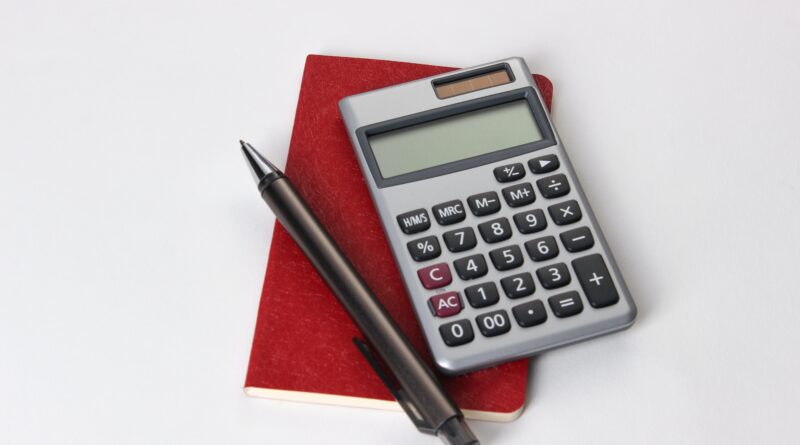Dollars & Sense: Financially Ready for 2023
Preparing For A Changing World
by David Albin, wealth advisor, Wealth Building Now

(Editor’s Note: To best serve high and ultra-high net-worth families, David Albin embraces a holistic analysis of their entire circumstances. He has assembled specialty experts who help contain taxation and who select, vet, and implement financial tools to economically meet client objectives, ensure liquidity, maintain family harmony, and keep wealth in client families. He can be contacted at david@wealthbuildingnow.com and (855) 451-0500. To learn more about his services, please visit www.wealthbuildingnow.com.)
Since the beginning of the pandemic, there has been a massive disruption to lives, livelihood, costs of living requirements, savings plans, and health care, and an entire spectrum of previously established norms of living. We are now experiencing very high year-over-year inflation in basic goods and the costs of energy that give us mobility, productive capacity, and year-round comfort.
The government’s forays at controlling inflation have pumped billions of dollars into circulation and have hugely increased the government’s appetite for cash to spend. Apparently to be in position to satisfy part of the government’s demand for cash, our national leaders have adopted policies to add another 87,000 employees to the nation’s tax enforcer, the Internal Revenue Service (IRS).
This is the background that will in fact be shaping how all of us adapt our business and financial planning during 2023. One of the first things we should be doing is looking at what fundamental financial things we’ll have to accomplish and what structures we’ll have to have in place in order to be in the best position to deal with the changes that are all around us.
Cash Is Always King
In an environment of sharply escalating prices and costs, ensuring adequate available cash and liquid assets is critical. This means focusing expenditures on those things that are essential and that create savings and investment return, and it means avoiding spending on non-essential items.
With a substantial increase in IRS personnel on the horizon, it can be anticipated that there will be more audits of more individuals and of more aspects of their activities. Combined with an emphasis on more social responsibility, there is a likelihood that changes in taxation may change a number of heretofore limited taxation strategies into strategies that may be more highly taxed without adjustments to a taxpayer’s business and asset structure.
Reducing Tax Liabilities Can Be Pivotal
Controlling taxation is central to the generation, growth, and retention of assets and wealth. It is clear to most people that the lower your current taxes, the greater the portion of your net current income that actually comes to you. What a significant portion of people have not calculated is what the long-term effects are of having first retained a higher portion of your income, and then watching how much more you can accumulate through compounding of a higher net after-tax initial income compared to the compounding of a smaller initial after-tax income. When the structures and investment vehicles selected by an individual are also tax-favored, through such mechanisms as tax deferral, then a person or family can leverage growth to an improved degree, as well.
Non-Taxed Scenario
One of the areas that has been safe for many well-off families has been the possibility of having no estate taxes on smaller estates. A common scenario has been a family with total assets of up to a few million dollars and holding the assets in commonly used trusts. As happens in most families, one spouse may pre-decease the other. Often, the surviving spouse will eventually sell off some of the assets, with not wanting to maintain a large home as a driver for the sale. It goes without saying that most individuals would consult with their CPAs to confirm the tax-implications of a proposed sale.
It is generally expected that because of step-up in basis and with the total amount of assets being within the estate tax exclusion amounts, that the resulting sale will not generate taxes. Many times the CPA has said that the sale will be safe from taxation. That provides a level of comfort to the surviving spouse and frees them from concern over taxes on sale. However, sometimes things don’t work out that way. We are aware of situations where the above scenario has occurred, and the surviving spouse got a tax bill for hundreds of thousands of dollars after selling their home. What could cause this to happen?
How the Tax-Free Scenario Was Tainted
It turns out that this particular tax-free scenario was in danger right from its inception. As most discerning families are aware, one of the things that happens in estate planning is that the trusts that you set up have to be funded once the trusts have been established. Funding includes conveying various assets into the trusts.
It turns out that when assets, such as a family home, are conveyed into a trust, those assets retain certain characteristics that the assets had before they were conveyed to the trust. This is a very complex area, including how assets are titled and what may have been property held in joint tenancy or held in community property, and how and when certain titling changes took place.
If this is not done properly, then any latent tax vulnerabilities persist even after the property has been placed into the trust. This means that many years after trust funding, and after a sizable asset sale, an audit of the trust transactions can bring to light any titling-tax-structure defects in the history of asset status as they were brought into the trust. That is the point at which a surviving spouse may be confronted with what can be a very large and unanticipated tax bill. To say that that is disruptive to life planning and happiness is a profound understatement.
Will Auditors Look for These Situations?
These large unanticipated tax bills come to older families where a spouse has passed, and where the survivor needs all available cash and is financially and emotionally vulnerable. Since the tax bills from these incidents are large, one of the tasks for the new IRS auditors might be to review the asset characteristics of large transactions sold out of trusts.
Avoiding or Repairing Tax-Liabilities in Trust Structures
As is the case in all tax planning, doing it properly on the front end is the best procedure of all. There are select law firms that can help you understand what assets can be in a position of tax liability and that can, in most cases, come up with steps to go through to cure the problems before assets go into trust. This saves a lot of worry and difficulties.
An Asset Review May Be in Order
It leaves the issue of what to do with assets that are already in trust, and that may have a titling history that could create unnecessary tax liabilities. This vulnerability once more points out the wisdom of reviewing holding and decisions that may have been made many years ago against current taxation trends. In point of fact, there are frequently remedy procedures that can be followed to cure the issues that could cause undue taxation. As always, the earlier the reviews and adjustment are established, the better off the taxpaying family will be. Certainly undertaking the reviews while all concerned are living is the best strategy.
Planning Asset Growth
Many individuals that financially plan to achieve future target asset levels may leave two very important aspects out of their planning, which are insulation from loss of principal and avoiding income gaps. In the second half of 2022, we’ve seen some tremendous equity losses in asset accounts. In October 2022, estimates were published opining that many qualified retirement plans had suffered equity drops of around 34%. That is an echo of the equity massacres that occurred in 2008.
Recovering from an equity drop always requires portfolio gains that are a much bigger percentage than the drops that occurred. Let’s do the math. A $100,000 account that drops 34% is down to $66,000. For a $66,000 balance to recover back to $100,000 requires a 52% gain just to get even. So, if you’ve dropped the 34%, how probable is it that you’ll attain a 52% gain in a short while to get even? Plus, how long do you suppose it will take to gain enough to be above the $100,000 with which you started? Of course, as these words are written, we don’t know if the 34% drop is the bottom of things or not. Who knows how much recovery may be needed?
Protecting From Principal Losses
It is generally agreed that as people reach their 50s, 60s, and 70s, that their years of being able to make up from gigantic equity losses are in their rear-view mirror and can hardly be tolerated going forward. The reason is as explained just above, that the gains that have to be attained to recover from significant losses are large and are very likely to take years. Therefore, it makes a lot of sense to investigate those investment vehicles that guarantee your principal against equity market losses as places for a portion of one’s portfolio.
There are many such products, and they will yield growth equal to a substantial portion of market-upwards movements while insulating your account balance from the inevitable market drawdowns. This performance profile over the decades has proven to provide reliable asset growth and constant availability of the greatest part of your initial contributions plus accumulated growth.
Under such plans, your equity never takes a beating. This is especially important when you’ve gotten to the moment when you want to stop building assets and start withdrawing cash for your own use. The amount of distributions you can withdraw is substantially higher when you’ve insulated yourself from market drawdowns than it would be if you had to start taking distributions from a program that subjected you to market losses and happened to be in a market loss condition.
Eliminating Income Gaps
While many people plan for asset growth, far fewer look at what their guaranteed streams of income will be in the future. As we stated early in this article, cash is king. If you don’t have cash when you want to take life easy, things can be very, very tough.
Planning for future income and to avoid income gaps means taking a hard look at what your spending habits are likely to be in the future. Then, you have to see what the sources of guaranteed income will be. These could include net income from real estate you may own, Social Security, pension fund guaranteed payouts, and income from the portfolio that you’ve insulated from market losses and that can be turned into guaranteed income.
A legitimate planning objective is to ensure that the income that is guaranteed from all your income streams will exceed what your future spending will be. If there is a looming gap, you may have to reposition assets now, or change the structure of your holdings for taxation purposes, trim future expenses, increase today’s savings by being more frugal now, possibly reduce some of what you’d like to be using cash for in the future, or employ other strategies too numerous to mention here.
Financial Challenges in 2023
We know there will be many financial challenges in the coming year, but we don’t yet know what they will be. We can look out for increased costs, new taxation at various government levels, the possibility of more economic disruption from various mandates that may be thrown at us, friends and relatives that may wind up in dire straits, and the scarcity of certain raw materials that are required for project completions. There are many banking sources talking about the possibility of recessions and even energy and food scarcity.
Planning now for the greatest financial strength for today and the future seems more in order than ever. Take a good look at your circumstances and what you’ll need and start moving in smart directions today.



